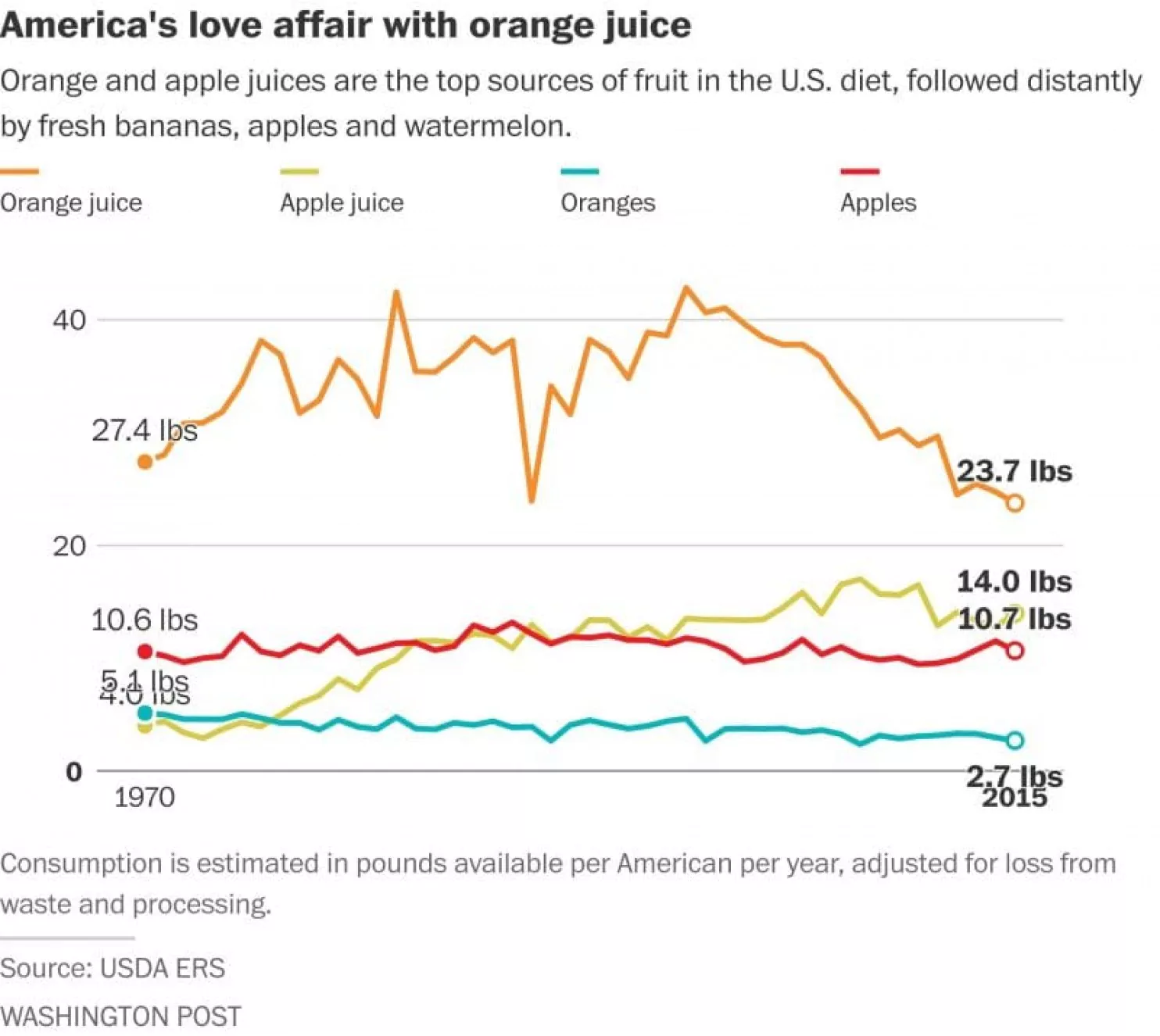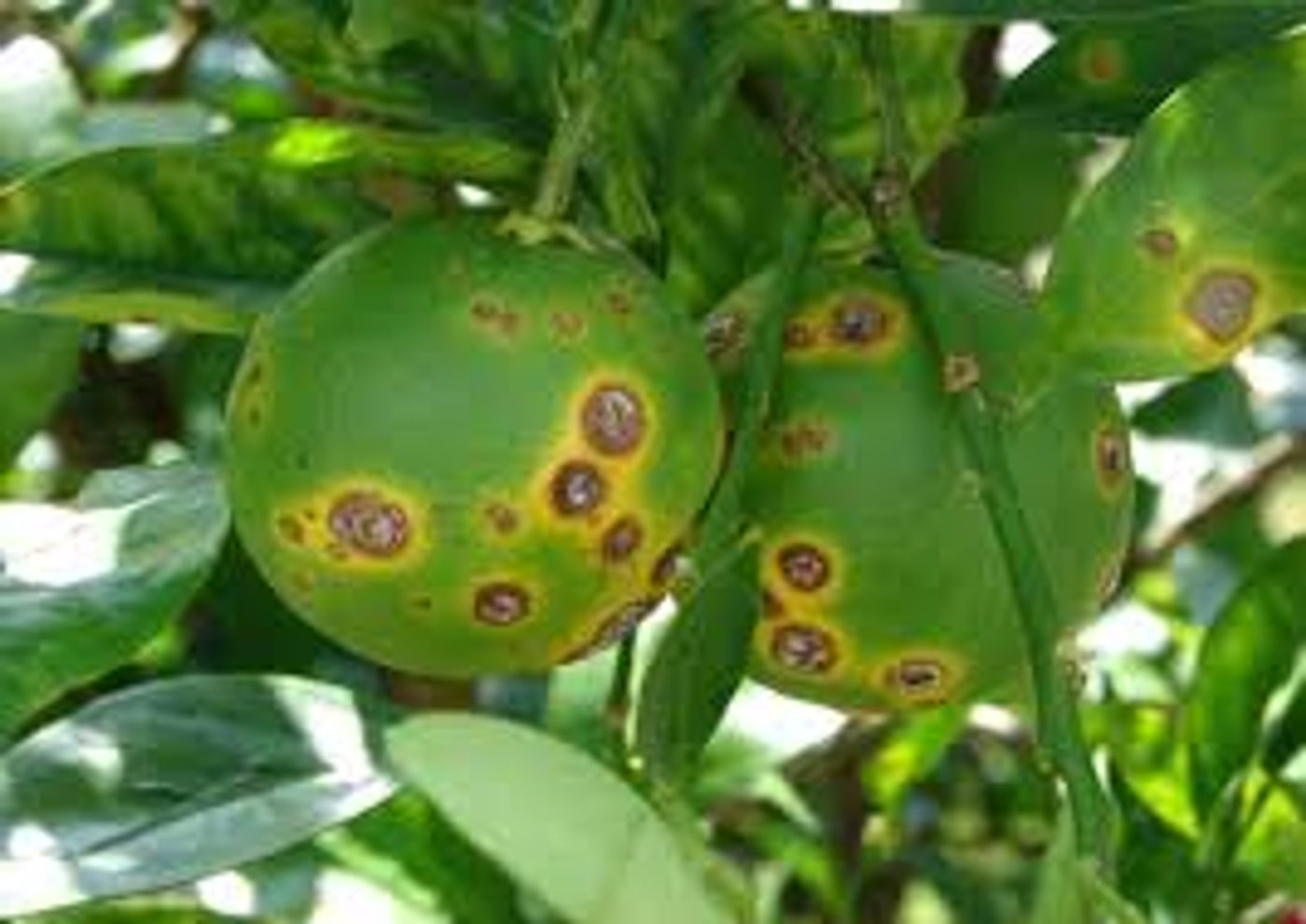Hope you like your OJ green...
Florida’s oranges are under threat, and while climate change and hurricanes are a part of that threat, weird weather patterns aren’t the only danger to the orange orchards. A disease called citrus greening has taken a huge toll on orchards throughout the state in the last several years and it looks like this year’s crop may be the smallest since the 1940s.
The disease takes over the leaves of a tree and “hardens the arteries,” according to the Wall Street Journal, essentially making it impossible for the tree to pass water and nutrients through its xylem and phloem. That means that the tree doesn’t have enough energy to properly produce fruits, and oranges will fall off of the tree before they’re even ripe.
The consequence of this disease is that Florida’s orange production has plummeted due to lack of supply. In 1977, Florida had 53 orange juice processing plants; now there are seven. But lack of supply isn’t the only reason for the fall. Another factor is the decreasing demand for oranges and orange juice. Though Americans still call the orange their favorite fruit, the amount of OJ we’re drinking has greatly decreased in the last several years, and USDA data suggests that the trend isn’t just a short-term tendency.
Source: The Washington Post
Also known as huanglongbing, citrus greening, has cut Florida orange and grapefruit revenue by $4.64 billion, says Jacqueline Burns, the dean for research at the University of Florida Institute of Food and Agricultural Sciences. That’s meant approximately $1.76 billion in job losses. And all that was before Irma.
Although it is difficult to quantify the losses caused by Hurricane Irma, as many orchards are still undergoing recovery processes, the most recent estimates suggest that up to 70% of the orange crop this year was lost. That has caused many Floridian orange farmers to give up on the fruit all together, cutting their losses by either selling to developers or investing in different crops.
Nevertheless, some orange lovers may refuse to give up, looking ahead instead to genetically engineered oranges with resistance to greening that could come as soon as 2022.
Sources: The Wall Street Journal, Washington Post, WBUR










